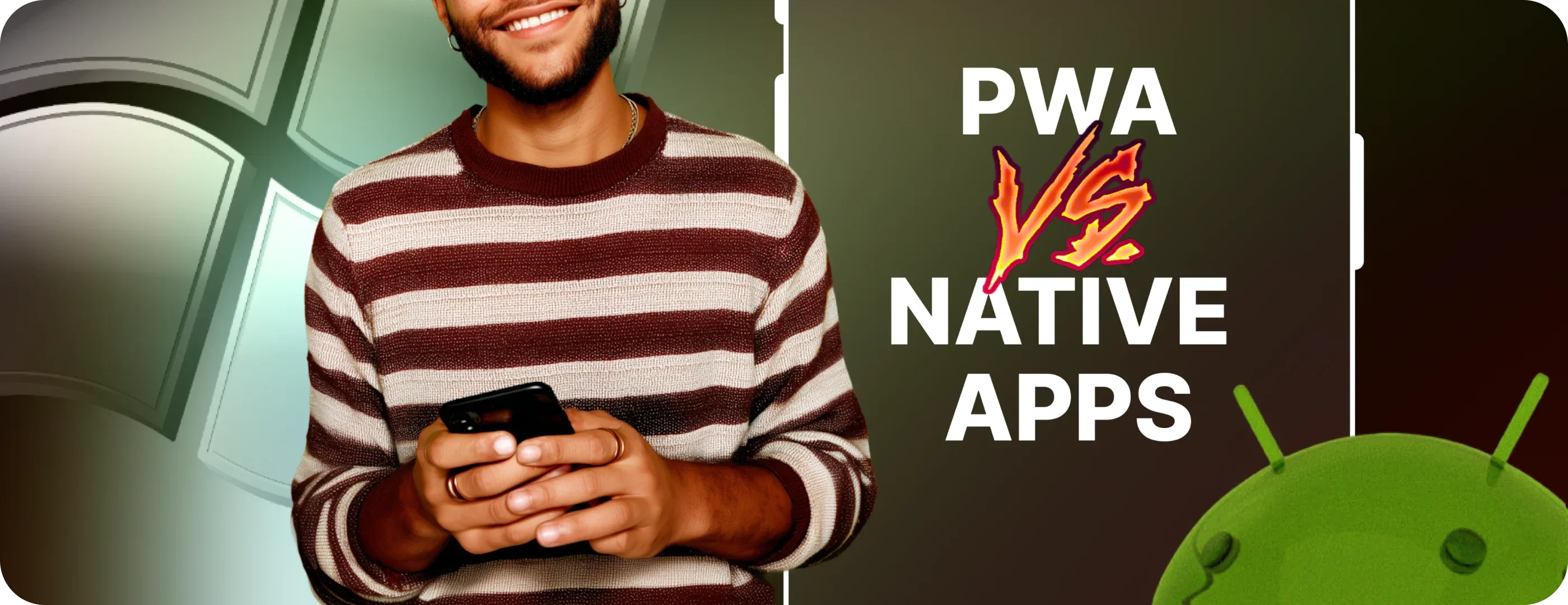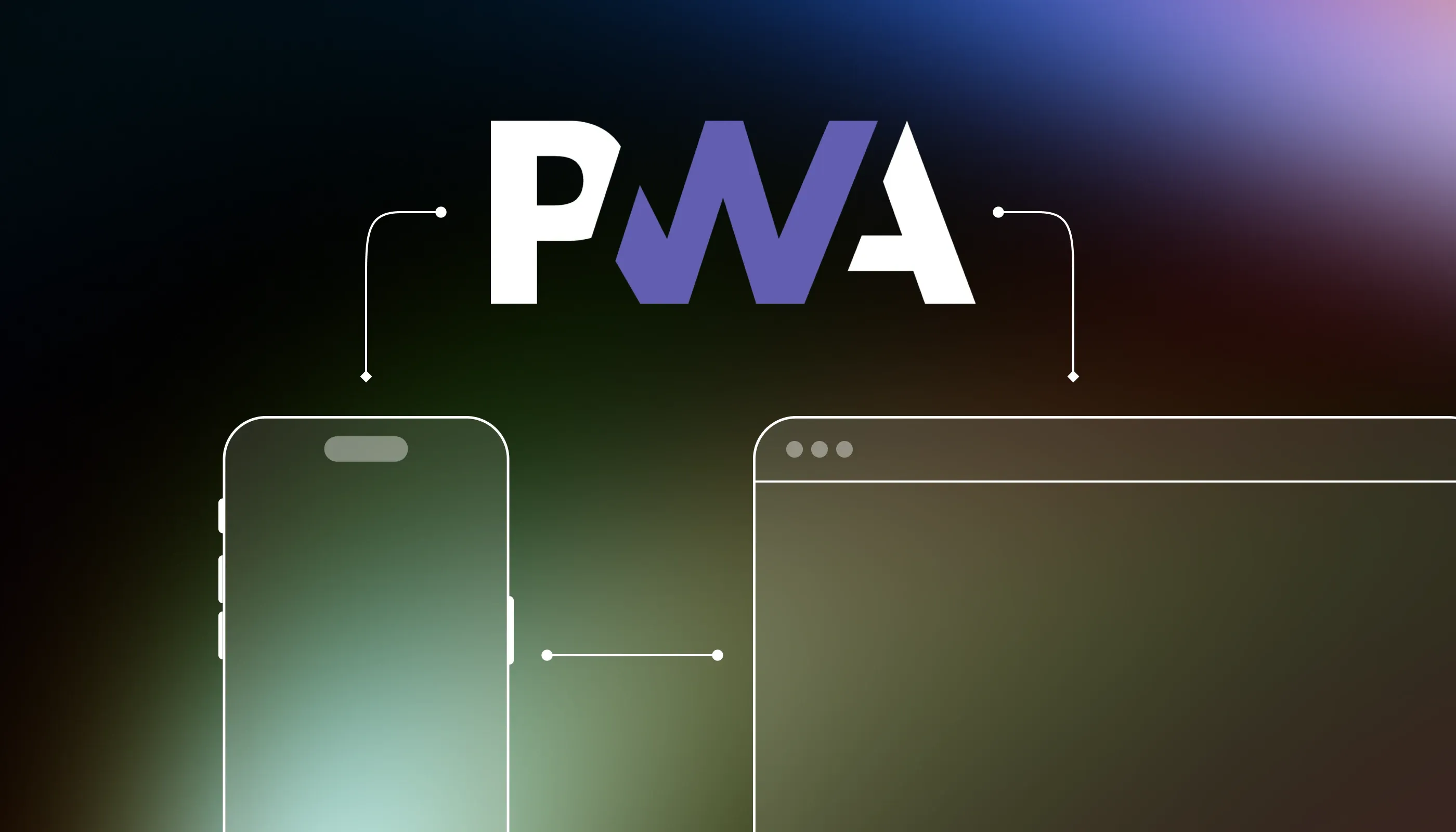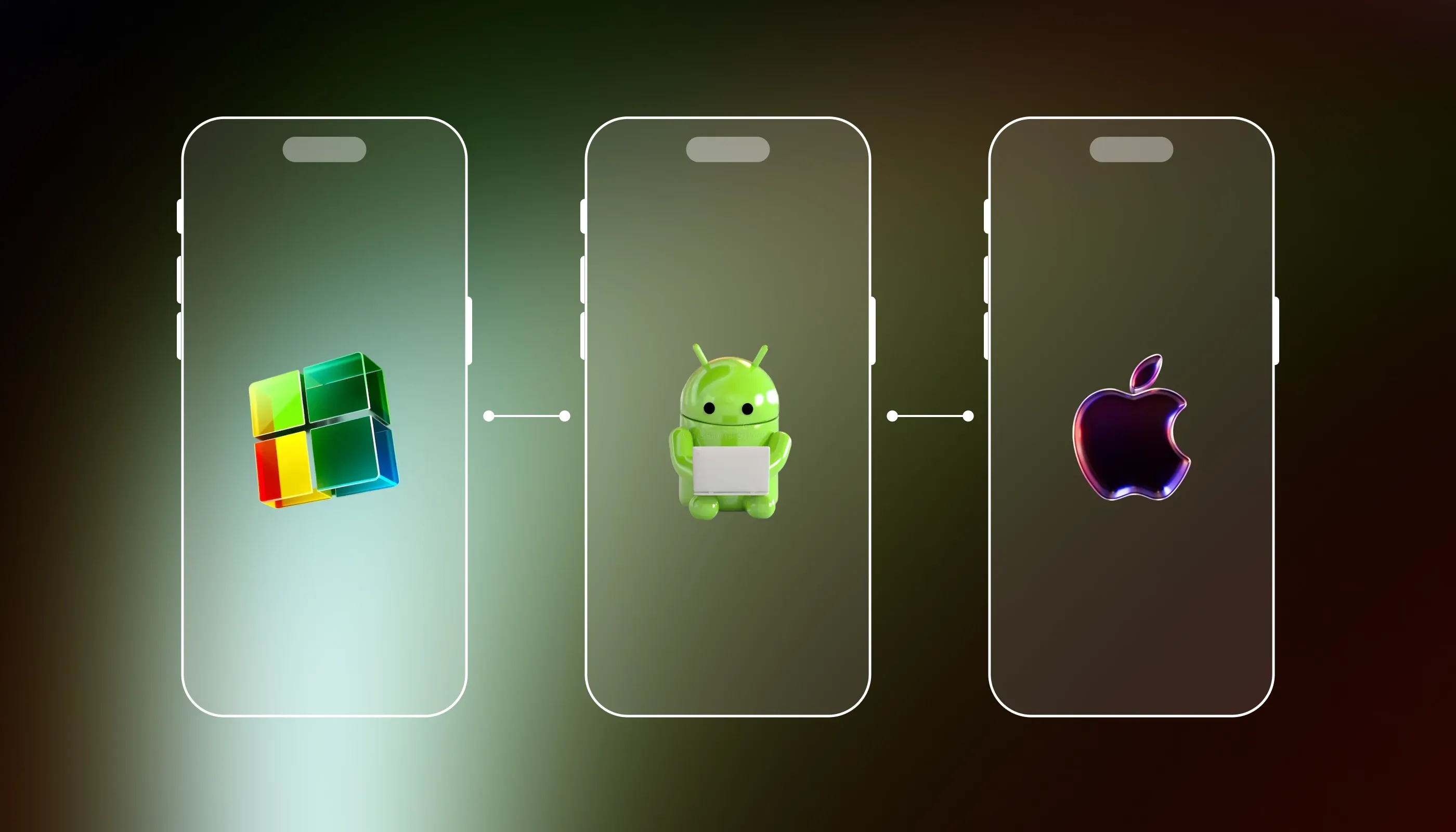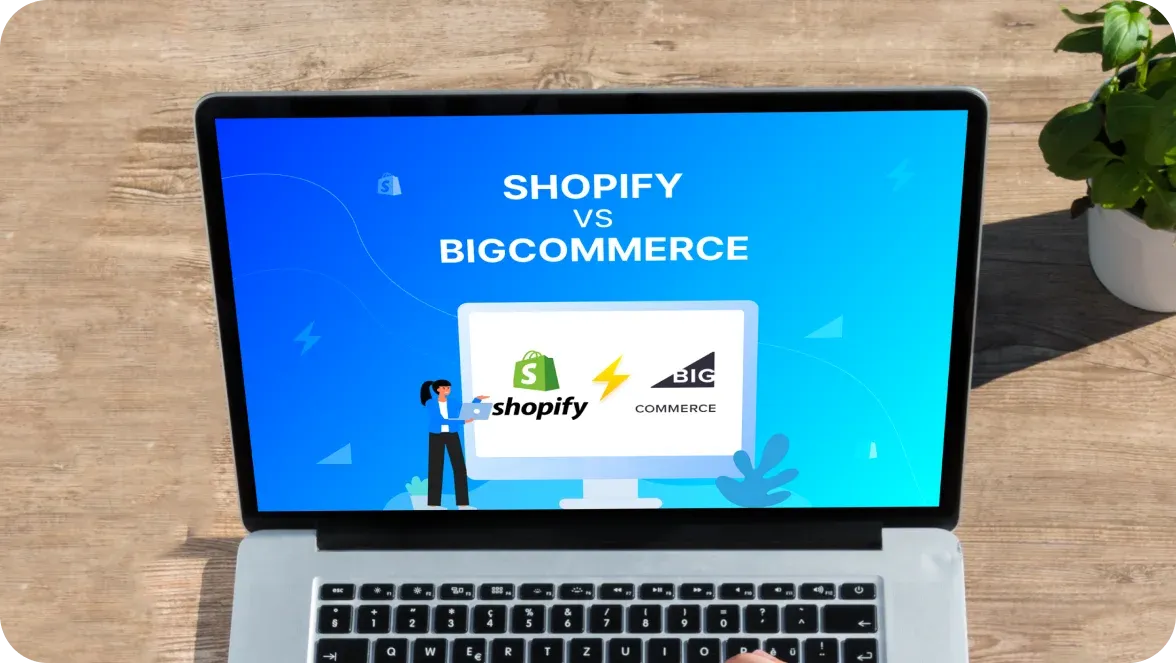
PWAs (progressive web apps) have become a popular option that sometimes may be an alternative to native mobile apps due to PWAs’ offline capabilities, fast loading speed, and compatibility with multiple devices. So which option is better for your business? What is the difference between PWA and a native app and how to make a choice? We got you covered in this article.
What is a PWA?
Progressive web apps (PWAs) are a type of web applications that combine features of a native mobile app and a website.

From a technical standpoint, PWA operates through browsers and uses standard web technologies, such as HTML, CSS, and JavaScript. However, it has unique components, such as Service Workers that enable PWAs’ offline capabilities, and the Web Manifest file to install PWAs much like an app on a user’s device.
From the end user perspective, PWA works across all devices – laptops, smartphones, tablets, and others that use browsers – allowing visitors to view web pages much faster than it’s possible with a regular website and install this web app on a mobile device for instant access.
What is a native app?
A native mobile app is a software application developed specifically for mobile devices and mobile operating systems, such as iOS and Android.

From the technical point of view, native apps are built using platform-specific languages and frameworks, and typically require separate development efforts for each operating system. For example, you may need a Swift programmer to create a mobile app for iOS, and a Kotlin specialist to create a native app for Android.
From the end user perspective, native apps are available for installation in app stores like Google Play and can be used on mobile devices only.
Native app vs PWA. Feature comparison
What is the difference between the progressive web app and the native app features? To answer this question, let's first see which features are included in a PWA.
PWA features
Offline capabilities
Due to Service Workers – special JavaScript files – PWAs can work without internet access, allowing people with poor connections to view all pages and elements that have been cached or placed on local storage.
Effective caching
You can apply multiple caching strategies to your PWA depending on the network stability available for your audience and the scope of content you want to display at any moment. For example, if you don’t need to refresh your content on a daily basis, you can cache all your assets. On the other hand, if some elements need to be frequently updated, you can exclude them from caching at all.
Cross-browser compatibility
PWAs are accessible from nearly any desktop and mobile browser, such as Chrome and Safari, including even some old versions. However, each browser supports different PWA capabilities, so for the latest information, you need to check each browser’s documentation regarding PWA compatibility.
Single codebase
You can create the same code to deploy and run on different devices, from iPhones and iPads to computers on Windows OS, without having to master additional programming languages. Still, you have the option to customize your app's styles and design for a better user experience on every device.
Feature detection
PWA can detect if the user’s browser supports some APIs for additional PWA functionality. This allows it to decide whether to use a basic app version with limited features to prevent errors or add advanced functionality, such as push notifications or background sync.
Modern APIs
Using a vast range of APIs is what makes the PWA experience similar to native apps, ensuring robust interactivity and user engagement. For example, being connected through the Geolocation API lets the PWA obtain and use the current user location to display relevant content.
Installation option
PWAs can be installed on a user device right from a browser or from Google Play if listed via Trusted Web Activity (TWA). After the installation, users can instantly access the app by clicking on an icon on their smartphone. The iOS App Store currently doesn’t accept PWAs to be a part of the available apps, but iOS users can download PWAs via the Safari browser.
Push notifications
PWA uses web push notifications to alert users about the news and updates and nudge them to return to the app for more information.
On top of that, PWA can be indexed by search engines and attract organic free traffic, driving more sales without using ads.
What about native apps? How do their features differ from PWA’s ones?
Native app features
Optimized for a specific platform
Unlike PWAs, native apps are built specifically for a mobile operating system – Android and iOS. Typically, it requires separate programming languages, such as Kotlin and Swift, and different development approaches. On the other hand, native apps are better integrated with the platform ecosystems and functionality, ensuring a smooth user experience.
Offline capabilities
Just like PWAs, native apps have offline modes with limited functionality that still allow users to see content and perform some actions without an Internet connection. Similar to PWA, offline capabilities are ensured through caching and local storage.
Access to device features
Native apps can directly access a broad range of device features, such as microphone and camera, NFC and biometrics, resulting in higher performance and dynamic interactions.
App Store and Google Play support
Native apps are uploaded and updated through App Store and Google Play. The platforms provide in-app purchases, subscriptions, ads, and payment management for app monetization. At the same time, you need to pay fees for listing in app stores and a percentage for transactions.
App push notifications
If users allow sending push notifications from a native app, this can be used for notifying customers about new products, cart abandonment, social media messages, and much more. App notifications allow for deep links and rich media.
Let’s compare the features of PWA vs native apps in a single table for better clarity.
| Feature | Progressive Web App (PWA) | Native App |
|---|---|---|
| Installation | Installed via browser prompt, no app store needed | Installed via App Store (iOS) or Google Play (Android) |
| Hosting/Distribution | Hosted on a web server, updated instantly | Distributed via app stores, updates require approval |
| Push Notifications | Supported on Android (via browser APIs) Limited on iOS (basic support) | Full support on iOS & Android with rich media, deep links, and background notifications |
| Offline Support | Depends on caching (Service Workers) and local storage | Offline access using local storage and databases |
| Access to Device Features | Limited through APIs: camera, GPS, geolocation, some sensors | Full access: contacts, Bluetooth, NFC, biometrics, background services |
| Performance | Runs in browser, slightly less performant for complex apps | Runs directly on OS, highly optimized for speed & performance |
| Discoverability | Indexed by search engines, shareable via URL | Discoverable only via app stores |
| User Experience (UX) | Responsive, but may feel like a website | Seamless, integrated, native look & feel |
| Monetization | No app store fees if not listed | Subject to App Store/Google Play fees |
| Development Cost | Lower (one codebase for all platforms) | Higher (separate apps for iOS & Android, or cross-platform frameworks) |
PWA vs native app pros and cons
So, which is better for your business? We summarized native and progressive web apps pros and cons to help you make a decision.
PWA ensures fast load speed and an app-like experience across multiple devices and browsers. Once you add some changes to your PWA, they appear on the user end. You can either list it on Google Play to be found among native apps or keep it only available through Google search as a regular website and optimize it for higher rankings. Since PWAs are powered by a single codebase, the development process is cheaper and faster than with native apps. At the same time, PWA has limited functionality compared to native apps since they’re not directly integrated with mobile platforms. Another drawback is that users are still not very familiar with PWAs, so you need to additionally promote its capabilities to nudge users to install a PWA like a native app.
Learn more details and specifics about PWA benefits for ecommerce in our article.
Native apps pros and cons are based on their robust capabilities. On the one hand, they may have greater complexity and more sophisticated logic than PWAs on mobile devices, since they can use the full scope of platform services and features. Mobile apps typically have excellent performance and, if built professionally, ensure a perfect user experience. At the same time, native apps require costly development and maintenance, as well as paying app store fees. These apps are not visible in search engine results and are distributed only via app stores.
Based on these characteristics, how to make the right choice between progressive web apps vs native apps before developing a solution for your business?
When to choose PWA
PWA is best suited for use cases where you need a solution that runs on multiple devices, even without an Internet connection. For example, PWA could be a good solution for promoting your products in rural areas with low network stability. You may also consider PWA development to improve load speed and ensure a mobile-first experience for your current web app, or to create an MVP for attracting investment and further full-scale development.
Why do companies choose PWA? Let’s see some examples.
Uber created a PWA to attract a broader audience, reaching people with all kinds of mobile devices and poor Internet connections.
Pinterest was looking for solutions to optimize their mobile experience, and ended up developing a PWA that increased time spent by 40% compared to their previous native app.
Our client – a luxury mattress manufacturer – was looking for a solution to showcase their products on in-store devices. We, at DigitalSuits, offered to create a PWA, allowing customers to view product features on interactive screens without an Internet connection and with minimal data consumption.
If you’re unsure about the value of PWA for your business, don’t hesitate to contact our team for more information and consultation tailored to your specific project.
When to opt for a native app
Native apps are best for companies that seek complex app logic and consider mobile devices a priority in attracting customers and interacting with their audiences. Native mobile apps are used for multiple purposes, from collecting and analyzing data to selling goods and services. You’re familiar with plenty of successful apps available in Google Play and App Store, such as Google Maps, WhatsApp, and Instagram. They’re fully integrated with mobile devices and work as a whole. If you’re looking for the same experience and ready to invest in long-term development, native apps could be your choice.
Let DigitalSuits help
Whatever your choice is, our team helps create solutions that resonate with your business goals and meet your expectations. We provide software development consulting services to guide you across all project stages and offer outstaffing services if you need a specialist to accomplish your project on time. If you’re up for the PWA development, we’re here to help you create a tailored solution from the ground up, and launch and support it after the release.
Frequently asked questions
Which browsers support PWA?
The vast majority of browsers support PWA. On desktop, Chrome and Edge support the full functionality of PWA, while Firefox, Safari, and Opera support this technology with some limitations. On Android devices, PWA is supported by Chrome, Firefox, Edge, Opera, Samsung Internet, and Brave. On iOS, PWA is supported by Safari and third-party browsers, such as Chrome, Edge, Firefox, and Orion.
How much does it cost to create a PWA from scratch?
The cost of PWA development depends on the number of features you want to implement and the final scope of work. To estimate your project’s cost and timelines, contact the DigitalSuits team.
Can PWAs be as good as native apps?
Native apps are fully integrated with mobile platform ecosystems, making them faster and more efficient for purposes that require access to specific smartphone features. Despite the difference between progressive web apps and native apps, when building PWAs, you can choose from a vast range of programming languages and frameworks, such as Node.js and React, to get the quality matched with your goals. And not to forget about the advantages of PWA over native apps when it comes to deciding on which solution is better for you.
How do I convert my website to PWA?
If you’re planning to optimize your website for speed and consider converting it to a PWA, here are the stages you need to follow. First, you need to create the manifest.json file to tell browsers how to display your app after installation on a device. Next, implement Service Workers for caching and sending push notifications. To optimize your website for different devices and network configurations, make it responsive and enhance its speed by using lazy loading and other caching techniques. Once your website works as a PWA, test and deploy it like any other website. If you need assistance in this process, don’t hesitate to contact our development team.







































Was this helpful?
0
No comments yet